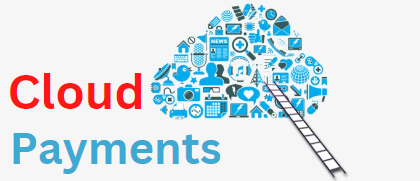Cloud Payment Gateway Integration
Businesses are constantly seeking ways to streamline their operations and improve efficiency. One area where this is particularly important is in payment processing. Traditional payment systems can be cumbersome and time-consuming, often requiring manual input and reconciliation. However, with the advent of cloud-based systems and the integration of payment gateways, businesses can now enjoy a seamless and automated payment process.
In this comprehensive guide, we will explore the importance of cloud payment gateway integration, the benefits of cloud-based payment systems, factors to consider when choosing a payment gateway, key features to look for, and a step-by-step guide to integrating a payment gateway with cloud-based systems. We will also discuss common challenges and solutions, best practices for secure integration, and provide case studies of successful implementations. By the end of this guide, you will have a thorough understanding of cloud payment gateway integration and be well-equipped to embrace the future of payment processing.
Understanding the Importance of Cloud Payment Gateway Integration

Cloud payment gateway integration refers to the process of connecting a cloud-based payment system with a payment gateway. A payment gateway acts as a bridge between the merchant’s website or application and the payment processor, securely transmitting payment information and facilitating the authorization and settlement of transactions. By integrating a payment gateway with a cloud-based system, businesses can automate their payment processes, reduce manual errors, and improve overall efficiency.
One of the key advantages of cloud payment gateway integration is the ability to streamline transactions. With traditional payment systems, businesses often have to manually enter payment information, leading to errors and delays. However, with cloud-based systems and integrated payment gateways, payment information can be securely transmitted in real-time, reducing the risk of errors and ensuring faster transaction processing.
Another important aspect of cloud payment gateway integration is the ability to offer a seamless user experience. Customers today expect a smooth and hassle-free payment process, and integrating a payment gateway with a cloud-based system can help achieve this. By providing a seamless payment experience, businesses can enhance customer satisfaction and loyalty, ultimately leading to increased sales and revenue.
Exploring the Benefits of Cloud-based Payment Systems

Cloud-based payment systems offer a range of benefits for businesses. One of the key advantages is the flexibility and scalability they provide. Unlike traditional payment systems that require physical infrastructure and hardware, cloud-based systems can be easily scaled up or down to meet the needs of the business. This scalability allows businesses to handle increased transaction volumes during peak periods without any disruption to their operations.
Another benefit of cloud-based payment systems is the cost savings they offer. Traditional payment systems often require significant upfront investments in hardware, software, and maintenance. In contrast, cloud-based systems are typically offered as a service, with businesses paying a monthly or transaction-based fee. This pay-as-you-go model eliminates the need for large upfront investments and allows businesses to only pay for the resources they actually use.
Cloud-based payment systems also offer enhanced security features. Payment gateways are designed to securely transmit payment information, encrypting it to protect against unauthorized access. Additionally, cloud-based systems often have built-in security measures, such as firewalls and intrusion detection systems, to further safeguard sensitive data. By using a cloud-based payment system, businesses can ensure the security of their customers’ payment information and build trust and loyalty.
Factors to Consider When Choosing a Payment Gateway for Cloud-based Systems
When choosing a payment gateway for cloud-based systems, there are several factors to consider. One of the most important factors is compatibility with the cloud-based system. Not all payment gateways are compatible with all cloud-based systems, so it is essential to choose a gateway that integrates seamlessly with the chosen system. This will ensure a smooth and efficient payment process.
Another factor to consider is the payment methods supported by the gateway. Different businesses have different payment needs, so it is important to choose a gateway that supports the payment methods preferred by the target customers. Whether it is credit cards, debit cards, mobile payments, or alternative payment methods, the chosen gateway should be able to handle them all.
Security is another crucial factor to consider when choosing a payment gateway. The gateway should have robust security measures in place to protect against fraud and unauthorized access. Look for features such as tokenization, which replaces sensitive payment information with a unique identifier, and encryption, which ensures that payment data is transmitted securely.
Additionally, it is important to consider the fees associated with the payment gateway. Different gateways have different fee structures, so it is important to understand the pricing model and ensure that it aligns with the business’s budget and expected transaction volume. Some gateways charge a flat fee per transaction, while others charge a percentage of the transaction amount. It is also important to consider any additional fees, such as setup fees or monthly maintenance fees.
Key Features to Look for in a Cloud Payment Gateway
When choosing a cloud payment gateway, there are several key features to look for. These features will ensure a seamless and efficient payment process, as well as enhance security and customer trust. Some of the key features to consider include:
- Easy Integration: The payment gateway should be easy to integrate with the chosen cloud-based system. Look for gateways that offer comprehensive documentation and support to facilitate the integration process.
- Robust Security: Security is of utmost importance when it comes to payment processing. Look for gateways that offer advanced security features, such as tokenization and encryption, to protect against fraud and unauthorized access.
- Multiple Payment Methods: The gateway should support a wide range of payment methods, including credit cards, debit cards, mobile payments, and alternative payment methods. This will ensure that customers have the flexibility to pay using their preferred method.
- Seamless User Experience: The payment process should be seamless and user-friendly. Look for gateways that offer a customizable payment page, allowing businesses to brand the payment experience and provide a consistent user interface.
- Analytics and Reporting: The gateway should provide comprehensive analytics and reporting features, allowing businesses to gain insights into their payment data. This will help identify trends, track performance, and make informed business decisions.
- Scalability and Reliability: The gateway should be scalable and reliable, able to handle increased transaction volumes without any disruption to the payment process. Look for gateways that have a proven track record of uptime and performance.
Step-by-Step Guide to Integrating a Payment Gateway with Cloud-based Systems
Integrating a payment gateway with a cloud-based system may seem like a complex process, but with the right approach, it can be relatively straightforward. Here is a step-by-step guide to help you through the integration process:
- Choose the Right Payment Gateway: Start by choosing a payment gateway that is compatible with your chosen cloud-based system and meets your business’s specific needs. Consider factors such as compatibility, supported payment methods, security features, and pricing.
- Set Up an Account: Once you have chosen a payment gateway, sign up for an account. This will typically involve providing some basic information about your business and agreeing to the gateway’s terms and conditions.
- Configure the Gateway: After setting up an account, you will need to configure the payment gateway. This involves setting up your business’s payment settings, such as accepted currencies, payment methods, and pricing.
- Integrate the Gateway: The next step is to integrate the payment gateway with your cloud-based system. This will typically involve adding some code snippets or using an API provided by the gateway. Follow the documentation and guidelines provided by the gateway to ensure a smooth integration process.
- Test the Integration: Once the integration is complete, it is important to thoroughly test the payment process to ensure that everything is working as expected. Test different payment scenarios, such as successful payments, declined payments, and refunds, to ensure that the integration is functioning correctly.
- Go Live: After testing, you are ready to go live with your integrated payment gateway. Make sure to communicate the new payment process to your customers and provide any necessary instructions or support.
Common Challenges and Solutions in Cloud Payment Gateway Integration
While cloud payment gateway integration offers numerous benefits, it is not without its challenges. Some common challenges businesses may face during the integration process include:
- Compatibility Issues: One of the main challenges is ensuring compatibility between the payment gateway and the cloud-based system. To overcome this challenge, it is important to choose a payment gateway that is specifically designed to integrate with your chosen system. Additionally, thorough testing and communication with the gateway’s support team can help identify and resolve any compatibility issues.
- Technical Complexity: Integrating a payment gateway with a cloud-based system can be technically complex, especially for businesses without a dedicated IT team. To overcome this challenge, it is important to carefully follow the documentation and guidelines provided by the gateway. Additionally, seeking assistance from the gateway’s support team or hiring a professional integration service can help simplify the process.
- Security Concerns: Security is a major concern when it comes to payment processing. To address this challenge, businesses should choose a payment gateway that offers robust security features, such as tokenization and encryption. Additionally, it is important to regularly update and patch the cloud-based system to protect against security vulnerabilities.
- User Experience: Providing a seamless and user-friendly payment experience is crucial for customer satisfaction. To overcome this challenge, businesses should choose a payment gateway that offers a customizable payment page, allowing them to brand the payment experience and provide a consistent user interface. Additionally, regularly testing the payment process and seeking feedback from customers can help identify and address any user experience issues.
Best Practices for Secure and Reliable Cloud Payment Gateway Integration
To ensure a secure and reliable cloud payment gateway integration, businesses should follow best practices. Here are some key best practices to consider:
- Choose a PCI-DSS Compliant Gateway: Payment Card Industry Data Security Standard (PCI-DSS) compliance is essential for ensuring the security of payment data. Choose a payment gateway that is PCI-DSS compliant to ensure that your customers’ payment information is protected.
- Implement Tokenization: Tokenization is a security measure that replaces sensitive payment information with a unique identifier, or token. Implement tokenization to protect against unauthorized access to payment data.
- Regularly Update and Patch the System: Keep your cloud-based system up to date by regularly applying updates and patches. This will help protect against security vulnerabilities and ensure the reliability of the payment process.
- Monitor and Analyze Payment Data: Regularly monitor and analyze payment data to identify any suspicious activity or trends. This will help detect and prevent fraud, as well as provide insights for improving the payment process.
- Provide Ongoing Training and Support: Ensure that your staff is trained on the proper handling of payment data and understands the importance of security. Additionally, provide ongoing support to address any issues or concerns related to the payment process.
FAQs:
Q: What is a cloud payment gateway?
A: A cloud payment gateway is a service that connects a cloud-based system with a payment processor, facilitating the authorization and settlement of transactions.
Q: How does cloud payment gateway integration work?
A: Cloud payment gateway integration involves connecting a cloud-based system with a payment gateway, allowing for the seamless transmission of payment information and the automation of the payment process.
Q: What are the advantages of using a cloud-based payment system?
A: Cloud-based payment systems offer advantages such as flexibility, scalability, cost savings, enhanced security, and a seamless user experience.
Q: How do I choose the right payment gateway for my cloud-based system?
A: When choosing a payment gateway, consider factors such as compatibility, supported payment methods, security features, and pricing.
Q: What security measures should I consider when integrating a cloud payment gateway?
A: When integrating a cloud payment gateway, consider security measures such as tokenization, encryption, and PCI-DSS compliance.
Q: Can I integrate multiple payment gateways with my cloud-based system?
A: Yes, it is possible to integrate multiple payment gateways with a cloud-based system, although it may require additional configuration and management.
Q: How long does it take to integrate a cloud payment gateway?
A: The time required to integrate a cloud payment gateway can vary depending on factors such as the complexity of the system and the chosen gateway. However, with proper planning and support, the integration process can typically be completed within a few weeks.
Q: What are some common challenges in cloud payment gateway integration?
A: Common challenges in cloud payment gateway integration include compatibility issues, technical complexity, security concerns, and user experience issues.
Q: Are there any additional costs associated with cloud payment gateway integration?
A: Yes, there may be additional costs associated with cloud payment gateway integration, such as setup fees, transaction fees, and monthly maintenance fees. It is important to carefully review the pricing structure of the chosen gateway.
Q: How can I ensure a seamless user experience during the payment process?
A: To ensure a seamless user experience, choose a payment gateway that offers a customizable payment page and regularly test the payment process to identify and address any user experience issues.
Conclusion
Cloud payment gateway integration offers businesses a range of benefits, including streamlined transactions, a seamless user experience, and enhanced security. By choosing the right payment gateway, businesses can automate their payment processes, reduce manual errors, and improve overall efficiency. However, it is important to carefully consider factors such as compatibility, supported payment methods, security features, and pricing when choosing a payment gateway.
By following best practices and addressing common challenges, businesses can ensure a secure and reliable integration process. With the future of payment processing moving towards cloud-based systems, businesses that embrace this technology will be well-positioned to thrive in the digital age.











